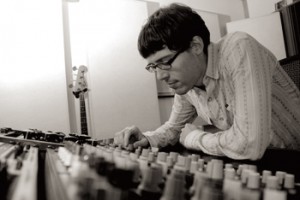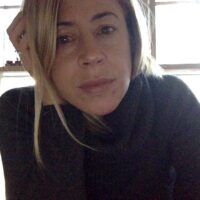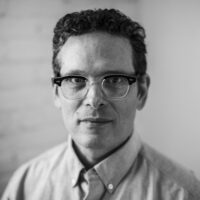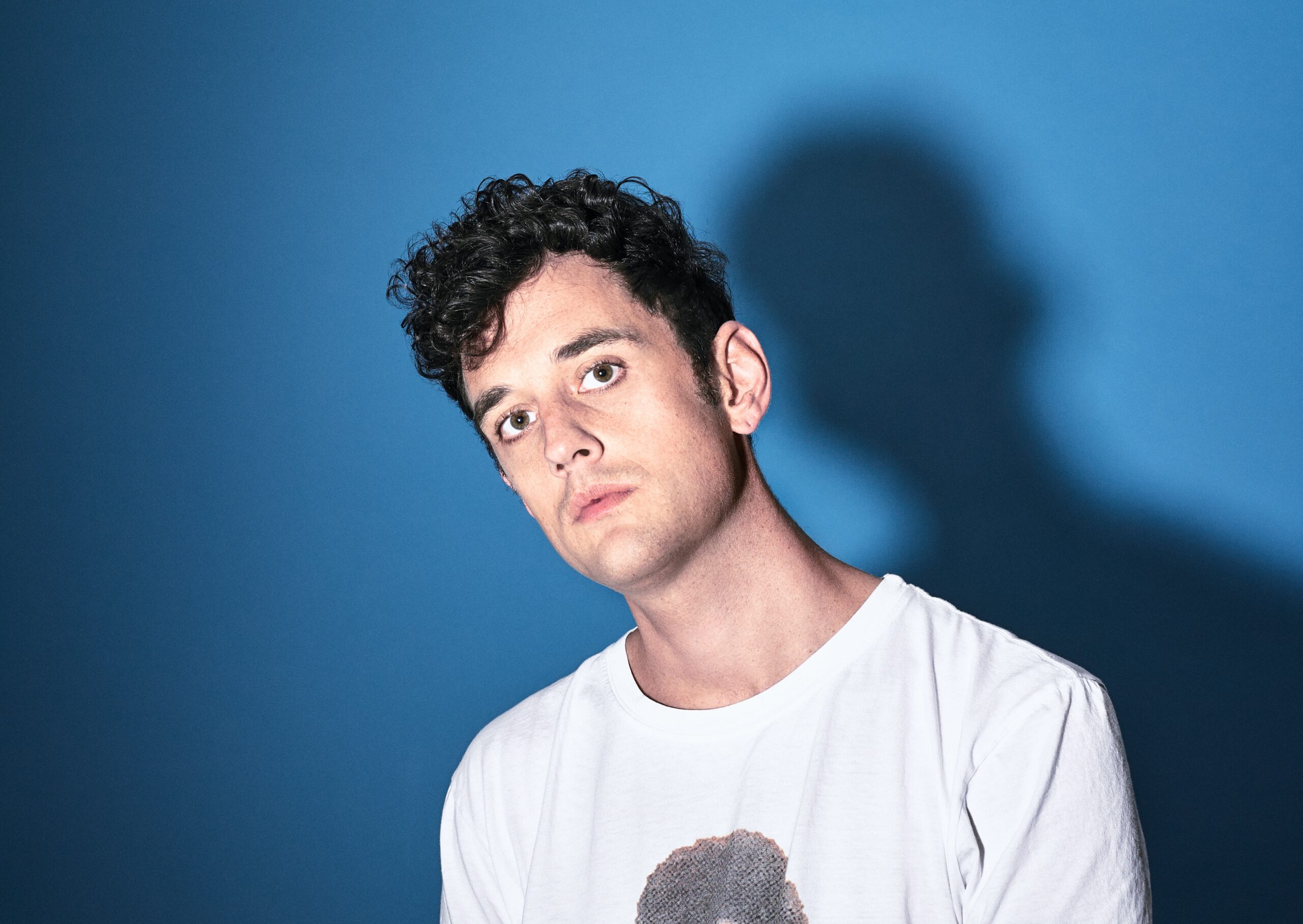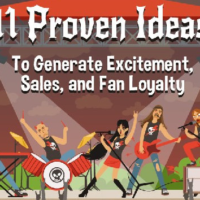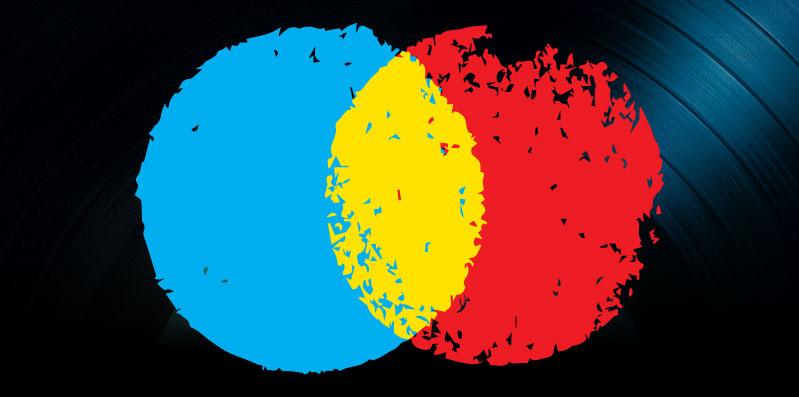
Music Mixing and Mastering
Adrian Morgan is a mastering engineer, studio musician and the founder of Timeless Mastering. Originally from a small town in northern Idaho and a graduate of the Berklee College of Music, he started his career as a trombonist, eventually realizing his passion for recording and engineering. He began his journey as an engineer in New York at Sterling Sound, working his way up to head of vinyl production where he cut over 2,000 records and became one of the world’s youngest engineers to master the art of analog disc cutting. While at Sterling, he also became a chief digital audio editor and worked on albums such as D’Angelo’s Voodoo, Jay-Z’s Volume 3 and Dido’s No Angel. As a studio musician, he is an accomplished bassist and didgeridoo player. In early 2007, he completed the construction of Timeless Mastering in the Williamsburg area of Brooklyn. Since that time, Adrian has worked with Cut Copy on the band’s Zonoscope album and has re-mastered the entire Fela Kuti catalog for Knitting Factory Records. He has also worked with Truth and Soul Records, Deer Tick, New Age artist Garth Stevenson, Imani Coppola, Aloe Blacc, Mingo Lewis (formerly of Santana & Return to Forever) and Variety Lights (David Baker of the band Mercury Rev).
I met Adrian after I saw him playing bass (incredibly well!), and we got into a discussion about his unique instrument, which is a replica of the ‘70s bassist and musical innovator Doug Rauch’s instrument. He recently took the time to talk to me about his winding path in the music industry and the finer points of the art of high-quality mastering. He also shared some tips for artists looking to choose the perfect mastering engineer for their projects.
Musician Coaching:
Thanks so much for talking to me, Adrian. How did you get into the music business?
AM:
Growing up in northern Idaho, my mother had a friend who was a conductor and a violinist. There was an old high school with an auditorium in the town where I lived, and she took me to a chamber music concert with violin, cello and two trombones. I remember sitting there, fascinated technically by the trombone. And by the time I hit the fifth or sixth grade, I got into playing trombone through the school band. I was completely obsessed from the first second with the instrument. I just immediately knew I was meant to play it.
I was an unusual case, because I was allowed to play in the middle school band as an elementary school student, and the teacher would take me in and let me sit in with the big kids. That was a real experience, learning how to read music and playing with people that were a lot better than I was. And that’s amazing to say, because Idaho has such a poor school system – one of the poorest in the country – so it was incredible that there was any music program at all. And the teacher was enthusiastic enough about music that it made it a really positive experience. I was really lucky to be able to start out in music that way.
Musician Coaching:
So, how did the kid from northern Idaho with the deep love of trombone wind up being a session player and the founder of a mastering company in Brooklyn many years later?
AM:
My family eventually moved to Sandpoint, Idaho, which is kind of a tourist town, similar to Lake Tahoe. Every summer there was an event there called the Festival at Sandpoint. It was curated by conductor/composer Gunther Schuller, who is famous in the classical and jazz world. He was one of the first guys to merge the two genres of music together and was also notably the French horn player on Miles Davis’ Birth of the Cool.
When I was in high school, they started running summer camps as part of the festival on the local ski mountain. They brought in some unbelievable musicians to teach at the camps, like Joe Lovano, Wynton Marsalis, Ray Brown and a lot of really heavyweight guys. The camp was really small – only 15 people. The first year, I went up there and hung out as they were rehearsing in the ski lodge. Gunther Schuller has two sons – Edwin, a bassist and George Schuller, a drummer. Ed was leading a particular ensemble, and he asked me if I was part of the camp. When I told him I was just a local kid checking it out, he said, “Here’s the deal: You can’t just sit here and check it out.” And I had my trombone with me, so he said, “Either you get up on stage and play with us, or you have to get out.”
Despite being nervous and inexperienced, I did ok playing with them. And it became kind of a news item, because they had this local high school kid mixing with the jazz heavyweights. Long story short, these camps were really what opened up my world and were a big part of my life and the town’s life for about three summers. They continued to do it until about 1995. I got to meet some really cool people – mostly New York session players. I got personal instruction from saxophonist Joe Lovano, who still is one of the greatest musical influences in my life.
That’s what brought me to Boston and Berklee College of Music. Many of the students attending the camp had been to Berklee and were raving about how it was where I had to go. The day I turned 18, my parents drove me to the airport, and I hopped on a plane to Boston. I played trombone, a really in-demand instrument there at the time. Thus, for all intents and purposes I got a free ride scholarship. That was a tremendous opportunity because Berklee was very expensive, and my family couldn’t afford a lot.
While I was at Berklee, I burned out a little bit. As a trombonist, everyone under the sun wanted to use me for their project. I was playing in over 13 ensembles and doing a lot of other things. It was really hard after the first year or two. I’ve always been into computers and very technical. Early on, I noticed Berklee’s engineering program with some really great studios and instructors. After about the first year, I realized I didn’t want to graduate with a degree in performance. I decided engineering was what I wanted to pursue. I wanted to know how to operate all the fancy equipment.
I became a dual major in performance and engineering, eventually switching to just engineering. It was a cool program to get into, and I was there at a great time. I had some really great teachers. My biggest influence in the beginning was a woman named Robin Coxe-Yeldham, the only female teacher there in the engineering program. She had a lot of passion for the job and was a fantastic instructor and a real advocate for me. Some of earliest most basic lessons I got in engineering were from her. I also studied with Tom Rhea, who was an employee at Moog music in the 70’s. He shared a lot of interesting life lessons and was a great influence. I was there from 1993-1997, and even though I learned a lot about recording and engineering, I still really had no idea what mastering was.
Musician Coaching:
And what did you do after graduation?
AM:
When I graduated in 1997, I basically knew right away that I had to get to New York. I saw a lot of people who ended up in Boston and were spinning their wheels. I didn’t have any money to move to there, so I probably could’ve planned it a little better. When I first got to NYC, I was really struggling, with no money and very few job leads. Before I left Boston, I had gone to the Berklee library and grabbed every New York lead I could. I was spending every day in New York hitting up every studio I could find and trying to get interviews. A lot of people I interviewed with painted this horrible picture of what it was going to be like to work in a studio, not making any money, etc.
I eventually was hired at some very small post production houses, but those didn’t pan out very well, so I turned to doing some temp work. I could always type pretty well and was good with computers. I was lucky and staffed at some good places. But it was miserable, because it wasn’t what I wanted to do. I had always had a goal of starting my own studio ever since I left college. I knew I had to find a way to get money so I could buy gear and everything I needed to get started.
I eventually saved enough for a computer and got on the ‘90s version of the Internet and found every studio I could in town. I’d reached my limit with temp jobs, and I just compiled a massive list and then faxed every single one of them. After several days of doing this, I just happened to fax a resume to Sterling Sound. About 15 minutes later, I got a telephone call from someone there, who said they happened to be looking for someone right at that moment.
At this point in my career, I had no idea what mastering was. All I knew about was recording and mixing. I thought it had something to do with tape restoration – restoring old copies and obscure formats and bringing them to a playable state.
I went into Sterling and interviewed with Bob Tis, who was one of the engineers for Jefferson Airplane and had engineered at Woodstock. He used to work at an old studio upstate called Boogie Hotel, which was originally a studio built by the band Foghat. He became the chief tech at Sterling in the early ‘90s. In the interview, we immediately hit it off. It just so happened that his son was interested in going to Berklee, so he was really interested in hearing about my experiences. Right then he hired me to help with production on a salary, with meals, etc., which was really exciting. It was an unheard of deal for an entry-level person at a music studio. I imagined I would get to work with all this big recording equipment with big mix engineers. I had absolutely no idea where I was at the biggest mastering studio in the world.
Musician Coaching:
And what is mastering?
AM:
My first impression of it was that it was just a bunch of guys locked in a room doing something. I could tell what the equipment was, but I had never seen those specific boxes before. The first day there was overwhelming, because I discovered that mastering was this third step I wasn’t aware of previously. And I realized that in 1998-1999, almost 90 percent of pop music was going through this one place Sterling Sound. We’d be working on something one day, and then the next day, I’d hear it everywhere – on the radio in the car ride home, in the supermarket. It was a strange experience.
I was still pretty confused about mastering at first, because my initial gig at Sterling was doing some of the tech work – soldering cables, etc. Then I was put in charge of listening to the masters, because computers were still unstable at this point and they needed people doing that. Unfortunately, Sonic Solutions was and is a fairly challenging platform to work with. As the lowest guy on the totem pole, if any problems arose I didn’t get a lot of help and there was a lot of heat put on me. There was kind of a disconnect between the front desk and the engineers there.
It took me many years to figure out what mastering is and how important it can be. I had to build my own setup with my own hands to truly understand what the possibilities are and what it can mean to people when it’s done well.
Musician Coaching:
I’ve been a musician for many years, and I’ve always thought of mastering as really meticulously fine-tuning the EQ and other elements that prepare a record for broadcast. I just know that after something is mastered it sounds brighter and just really pops off the deck.
AM:
I’ve heard a lot of explanations of it. And even a lot of engineers seem to be really unparticular about it – just really vague about the way they define it. Think of it like this, as a mastering engineer, you’re a sonic filter. You’re adding a layer of hyper-reality to what’s there in the mix, much like a photo re-toucher does to a photograph. In some cases, that means changing the mix a lot. In some cases you’re changing it a very little. It’s going to sound how your instinct tells you it should sound. At its best, it should be like a hand that comes out of the speakers and grabs onto you. You create something where the sonics of what you’re listening to have such an alignment that they draw you into the music. It’s not completely about preparing music for any specific format or balancing out track for track, although this is part of the process. As someone who masters, you are really focused on how the speakers are reproducing the music.
Musician Coaching:
When does mastering start and mixing end?
AM:
I feel like tracking, mixing and playing is all essentially the same thing. Each is performance based and ties into the content of the music. Your role as a recording or mix engineer should be much like being a musician in the band. You’re not afraid to make big changes. The process shouldn’t be driven by the technicalities. Of course, operating these digital platforms and working with outboard gear can be highly technical. However, even when you have a lot of elements to play around with, the technology ideally should be transparent. The music, vision, and concept should be put first.
Mastering is more of a technical and logical process where we are focused strictly on the sonics of the music. You’re listening to what the speakers are reproducing and the space in front of you. You are listening for specific resonances in the mix. Ultimately, when I’m approaching a mastering job, I ask myself, “How can I treat this source in a way that makes people want to turn it up and or listen to it again?” During the process, I will A-B a lot through various settings on my equipment and various music sources. It’s kind of like being at the optometrist’s office, when they have that thing they put that thing down over your eyes and ask you which option is better as they switch through the different lenses. That’s similar to how I approach mastering. I don’t take anything for granted or use the same process over and over again. Every source and mix is different, and it’s about logically working through the different variables involved.
Musician Coaching:
If you are a filter, what are your tools? I know some of it is about a fine EQ, but what else are you adjusting?
AM:
There really are quite a lot of options when it comes to manipulating just two channels. The most basic tools in the analog realm we have are equalization, dynamics. Stereo imaging tools such as mid-side processing can also be used. Digital plug-ins can be essential sometimes for doing the same as above, corrective work, or getting that last little bit of gain. It’s important to keep in perspective that we’re ultimately manipulating the phase of the signal by using any piece of processing equipment or plug-in.
We can also get in and do fine edits on mixes with problematic areas. Let’s say the verses are great, but when we get into the chorus, the vocals are too loud and taking over the mix too much. You have to get in there and manipulate that if you want a really loud master. Often, I will manually correct problematic spots in the mix before I send it out to my analog chain. There is really a lot that you can do in the computer to correct issues.
Analog gear is essential for my sound. At one point I had quite a lot of it; too much really. I had to use three equalizers to get the sound I’m getting now on one equalizer. It took me a while to figure out the analog gear that was really delivering the best results for my ideal. Top shelf analog mastering equipment generally uses de-tented switches for its controls. The left and right channels track very precisely, and the power supply is overbuilt to give good headroom. This comes at quite a price, however; the gear is very expensive. Early on, I worked on gear that was more suited for mixing and didn’t have these key features. I was able to get some good results, but all in all I felt a bit out of control. I couldn’t recall what I had done when I needed to, and getting the results I wanted was often a struggle.
Recording equipment generally has much more gain (12 decibels or more) and most controls are potentiometers with no detents. Mastering equipment works in much smaller gain steps than what you will find in recording gear, generally 1 decibel steps or less with a max gain of 5 to 9 decibels. While that may seem like a small amount of gain, when we’re working with the top of the spectrum – that final six decibels of headroom – those small gain steps become much more audible. You want that fine control when you’re working at the top of the dynamics spectrum.
Just because I have a lot of fancy expensive tools doesn’t mean I have to use all of them every for every single job. Very minimal processing can sometimes be the best approach.
Processing gear aside, the most important tool in mastering is the listening room itself. The room you’re working in should be well tuned. What you’re hearing in the room needs to translate to the real world. You also have to be well acquainted with the speakers you’re working on. I personally feel that working on three way speakers (low, mid, and treble drivers) is very important to getting the most accurate playback scenario. The most common speakers for mixing are two-way monitors (woofer & treble drivers). A crossover splits the signal going to both drivers, and often results in an inaccurate mid-range response. By having speakers that actually have mid-drivers, you can most accurately judge this critical range.
All in all, it’s very expensive and time consuming to set up a good listening room. It takes a lot of trial and error, blood, sweat and tears and practice listening.
Musician Coaching:
So, when you were at Sterling, you eventually worked your way up to mastering records.
AM:
Yes, and it was a long process. I was doing the production work there, and I eventually found my way into editing. Then I found myself under Tom Coyne, who is still one of the chief mastering engineers there. I think he may actually be the top billing mastering engineer of all time. He was so overwhelmed that he started throwing me in a room and making me edit. One of the earliest jobs he gave me was Dido’s No Angel. I was then given the opportunity to work on many other classic R&B and hip-hop records as he started to gain a little more confidence in me.
In the midst of all this, the engineers went and bought the company from the founder in 1998, very shortly after I started working there. They proceeded to fire the entire front office staff. The new guy in charge came in and told me they were re-launching their vinyl cutting business and restoring one of the vinyl lathes. Tom Coyne had been cutting all the vinyl himself up to this point and had no time for it anymore. He told me they wanted me to start working in the new vinyl room and be the new cutting guy. So, while I was getting into all the editing, I was put in charge of cutting vinyl for about two years.
At that point, I did get into mastering. Tom threw me a few small projects here and there, nothing high profile at first. As time went on, I was given the task when there was no one else there to do it. I also began working after hours with my own clients. I started hustling some music scenes around New York, making them aware of what I was doing and working on independent projects on nights and weekends.
Musician Coaching:
You’re also an active studio musician. What has that experience been like for you?
AM:
Playing music and working as a session musician has long been key balance for me. Mastering can be a really isolating job. In all this time, I’ve come so far as a player since I started in my school band. So, being a performing musician has always been really important to me.
Six or seven years ago, I found my way to the bass through a duo project I was a part of where I was originally playing bass on a Rhodes piano. I had never played any stringed instruments, so I had to undergo quite a learning curve. Gradually, I gave up on the brass instruments and became obsessed with bass. In many ways I have come to feel it is the instrument I have belonged on from the very beginning. Later, I got really into an obscure bassist, Doug Rauch who played with Santana in the 1970s. I am simply astounded most musicians and bass players have never heard of him. The guy had a unique style of playing, and I feel deserves every bit as much credit as an innovator on the instrument as Jaco Pastorius. He has been really influential to me as a musician in recent years.
Musician Coaching:
As a mastering engineer, you’ve worked with a lot of really talented artists throughout your career. What advice would you give someone who is trying to pick someone to master their music?
AM:
You should really check out the work the person has done. Then you should assess through their website, Facebook, etc. whether you feel like that person will be a good fit.
Maybe I’m alone in feeling this way, but I don’t feel like I’m in competition with other mastering engineers. People really make their choices on their own and decide to work with us for various reasons. There’s no way I’m going to be able to change someone’s mind once they’ve decided to work with me or with someone else. I like to think that work comes to me through trying my very best with every job. I really put solid effort into everything that comes across my desk. That might make me a little slower than some other mastering engineers out there. But ultimately, it really pays off for me.
Aside from checking out a mastering engineer’s work, you also need to check out the studio setup and make sure it’s the right fit for you.
To learn more about Adrian Morgan, his studio and the work he does, please visit the Timeless Mastering website.
